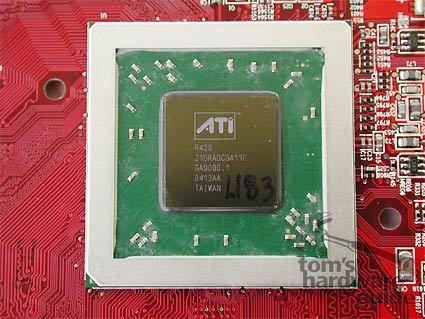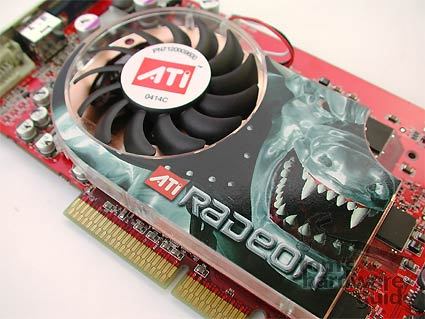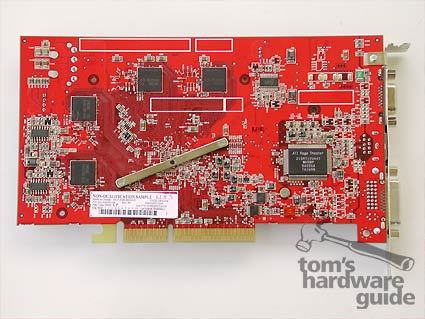ATi's X800 Pulls Off Another Coup in the Graphics Performance War
ATi Radeon X800 Series
The new Radeon X800 XT Platinum Edition looks almost identical to the X800 Pro aside from the markings on the memory modules.
ATi will offer two models when the product line becomes commercially available. These will differ only in the number of pixel pipelines as well as the memory and core speeds. The first of these cards will be the Radeon X800 Pro, which uses 12 pixel pipelines and will see commercialization during the next few days. A few weeks later, ATi plans to launch the faster version sporting 16 pipelines, called the X800 XT Platinum Edition. The launch date for this second card seems to be in a state of flux at the moment, though, although the general timeframe should be sometime between the 21st and the 31st of May or maybe even later.
Unlike NVIDIA, ATi does not use a different processor for the Pro version of the cards. Instead, four of the pixel pipelines will simply be deactivated. The modder community will be disappointed to hear that these "sleeping" pipes can no longer be reactivated through software or by flashing different BIOS, as was the case with previous cards. Later, lower-cost versions with four or eight pixel pipelines are also set to follow for the mainstream segment.
It stands to reason that ATi will also pare down the feature set of these mainstream cards, by reducing, for example, the number of vertex shader units. Then again, it's just as feasible that ATi may use the same processor design for the entire family of cards, including the four and eight pipeline versions. This way, even processors that didn't qualify as high-end products could still be sold.
The new R420 chip is manufactured on a 130 Nanometer low-k dielectric process by TSMC.
With a comparatively moderate transistor count of 160 million transistors, the R420 chip is a good deal smaller than NVIDIA's new NV40 chip. It will be produced by TSMC using the same "low-d" 130-nanometer production process on which the Radeon 9600XT was also manufactured. This allows ATi's cards to reach core clockspeeds of 520 MHz (X800 XT) and 475 MHz (X800 Pro). Both cards will use GDDR3 memory running at 560 MHz (1120 MHz DDR) in the case of the X800 XT PE and 450 MHz (900 MHz DDR) for the X800 Pro. The memory interface is 256 Bits wide, which is standard for cards of this class.
The cooler of the two new X800 cards is slightly smaller than that of the "old" Radeon 9800XT. The memory modules are no longer cooled. The fan is very quiet in operation. The driver increases the rotation speed when more cooling is needed. This increases the noise to higher but still comfortable levels. This happens in particular with the X800 XT PE in 3D games.
Get Tom's Hardware's best news and in-depth reviews, straight to your inbox.
Thanks to the low-k process and GDDR3, the cards should draw less current than the Radeon 9800XT. Each of the cards features only one Molex power connector. The processor also doesn't seem to run especially hot, so ATi was able to use the same single-slot cooling solution with which we are familiar from the Radeon 9800XT. This makes the ATi cards much more compact and less complicated than NVIDIA's GeForce 6800 Ultra, which requires a massive heatsink/fan combination and two separate Molex power connectors.
The back of the card carries no additional heatsink.
Current page: ATi Radeon X800 Series
Prev Page ATi's Radeon X800 Series X-Files Next Page The X800 Cards


